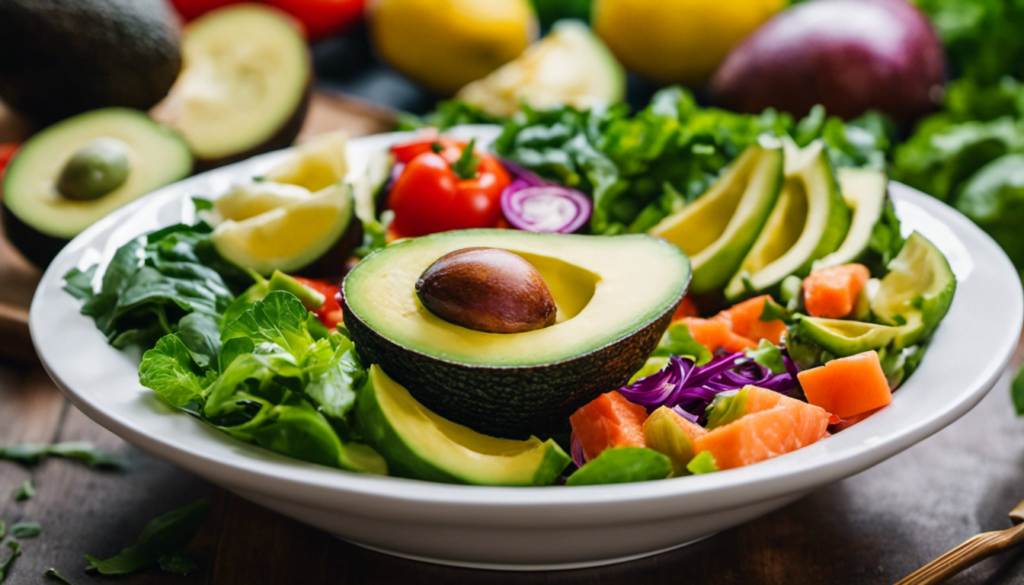Are you ready to conquer the dreaded keto flu and make your transition to the ketogenic diet a breeze? You’ve come to the right place!
In this article, we’ll provide you with evidence-based strategies and practical tips to help you smoothly navigate through this challenging phase.
By understanding the symptoms, staying hydrated, gradually reducing carb intake, and supplementing with essential nutrients, you’ll be well on your way to a successful keto journey.
So, let’s dive in and conquer that keto flu together!
Key Takeaways
- Adequate hydration and electrolyte intake can help alleviate keto flu symptoms
- Gradually transition into the ketogenic diet and make adjustments as needed
- Focus on consuming nutrient-dense foods and track your macronutrient intake
- Plan meals in advance, meal prep, and incorporate regular exercise into your routine
Understand the Symptoms of Keto Flu
Understanding the symptoms of keto flu is essential for a smooth transition into the ketogenic diet. Keto flu refers to a collection of symptoms that some people experience when starting a low-carb, high-fat diet. These symptoms can include fatigue, headache, irritability, dizziness, nausea, and muscle cramps.
It is important to be aware of these symptoms so that you can manage them effectively and prevent them from derailing your progress. One strategy for symptom management is to gradually reduce your carbohydrate intake rather than making a sudden and drastic change. This can help your body adjust more smoothly to the new diet.
Additionally, staying well-hydrated and replenishing electrolytes through foods like avocados, leafy greens, and bone broth can also help prevent and alleviate symptoms.
Transitioning into the ketogenic diet doesn’t have to be overwhelming if you understand the symptoms and have strategies in place for managing them.
Now, let’s talk about the importance of staying hydrated.
Stay Hydrated
To avoid dehydration, make sure you’re drinking enough water while on the keto diet. Preventing dehydration is crucial because when you’re in ketosis, your body excretes more water and electrolytes. This can lead to symptoms like fatigue, dizziness, and headaches.
Drinking an adequate amount of water helps replenish lost fluids and maintain proper hydration levels. However, it’s not just about plain water. The importance of electrolytes cannot be overstated. When you’re on the keto diet, your body may excrete more electrolytes like sodium, potassium, and magnesium.
Including electrolyte-rich foods like avocados, leafy greens, and nuts can help maintain electrolyte balance. Transitioning now to gradually reduce carbohydrate intake will further support your journey towards ketosis, but it’s important to do it in a controlled and gradual manner to minimize side effects.
Gradually Reduce Carbohydrate Intake
When it comes to reducing your carbohydrate intake, it’s important to start with a moderate approach. Gradually cutting back on carbs can help your body adjust more smoothly and minimize any potential side effects.
Alongside this, monitoring your macronutrient intake is key to ensure you’re getting the right balance of nutrients. Incorporating healthy fats and proteins into your diet can help you feel satisfied and maintain stable energy levels throughout the day.
Start with a Moderate Carb Reduction
One of the best ways to ease into the ketogenic diet is by starting with a moderate reduction in carbs. Instead of completely eliminating carbohydrates from your diet, opt for moderate carb choices to help your body adjust gradually. This approach allows you to still enjoy certain foods while transitioning to a low-carb lifestyle.
One method you can try is carb cycling, where you alternate between higher and lower carb days. This can help prevent feelings of deprivation and make the transition smoother. By incorporating moderate carb choices and utilizing carb cycling, you can ease your way into the ketogenic diet without feeling overwhelmed.
As you continue on this journey, it’s important to monitor your macronutrient intake to ensure you’re meeting your nutritional needs.
Monitor Your Macronutrient Intake
Make sure you’re monitoring your macronutrient intake to ensure you’re meeting your nutritional needs. Macronutrient tracking is an important aspect of a successful keto diet. Here are some tips to help you stay on track:
Calculate your macronutrient ratios: Determine the appropriate percentages of carbohydrates, fats, and proteins for your specific needs. This will help you maintain ketosis and avoid any deficiencies.
Use a tracking app or journal: Keeping a record of your daily food intake can help you stay accountable and ensure you’re getting the right balance of macronutrients.
Adjust as needed: Pay attention to how your body responds to different macronutrient ratios. If you experience keto flu symptoms, such as fatigue or brain fog, you may need to adjust your intake.
Seek professional guidance: If you’re new to macronutrient tracking or struggling to find the right balance, consider consulting with a registered dietitian who specializes in keto diets.
By monitoring your macronutrient intake, you can better manage your nutritional needs and optimize your keto experience.
Next, we’ll discuss how to incorporate healthy fats and proteins into your diet.
Incorporate Healthy Fats and Proteins
To incorporate healthy fats and proteins into your diet, try adding avocados and nuts. These foods are good sources of monounsaturated fats and can provide essential nutrients while following a keto diet. Avocados are not only rich in healthy fats but also contain fiber, vitamins, and minerals. Nuts, such as almonds and walnuts, are packed with protein, healthy fats, and antioxidants, making them a convenient and satisfying snack option.
When incorporating these foods into your diet, it’s important to practice portion control. Although avocados and nuts are nutritious, they are also calorie-dense. Aim for a moderate serving size to ensure you’re getting the benefits without going overboard.
Supplement with Essential Nutrients
If you’re following the keto diet, it’s important to supplement with essential nutrients to prevent keto flu symptoms.
Here are four supplement options to consider and help address potential nutrient deficiencies:
Electrolyte supplements: These can help replenish electrolytes like sodium, potassium, and magnesium, which may be depleted due to the diuretic effect of the keto diet. Maintaining proper electrolyte balance can alleviate symptoms like fatigue, muscle cramps, and headaches.
Omega-3 fatty acids: Since the keto diet tends to be low in sources of omega-3 fats like fish, supplementing with omega-3 can support brain health, reduce inflammation, and promote heart health.
Vitamin D: Limited sun exposure and reduced intake of vitamin D-rich foods can lead to deficiencies. Supplementing with vitamin D can support bone health, immune function, and mood regulation.
B vitamins: The keto diet may restrict certain food sources of B vitamins, leading to deficiencies. B vitamin supplements can support energy production, brain function, and nerve health.
Remember to listen to your body and adjust your supplement intake as needed. Transitioning to the keto diet doesn’t have to be overwhelming if you prioritize proper nutrient supplementation.
Listen to Your Body and Adjust as Needed
Remember, it’s important to listen to your body and make any necessary adjustments when following the keto diet. Intuitive eating and making mindful adjustments are key to a successful transition into this low-carb, high-fat way of eating. Your body will communicate its needs and limitations, and it’s crucial to pay attention and respond accordingly.
As you embark on your keto journey, be mindful of any changes in your energy levels, digestion, and overall well-being. If you experience any negative symptoms such as fatigue, dizziness, or brain fog, it might be a sign that you need to make some adjustments to your diet. Perhaps you need to increase your intake of electrolytes or modify your macronutrient ratios.
Additionally, be aware that the keto diet is not a one-size-fits-all approach. What works for someone else may not work for you. So, listen to your body and make adjustments as needed. Trust your instincts and seek guidance from a healthcare professional or a registered dietitian if necessary.
Frequently Asked Questions
Can I still exercise while experiencing keto flu symptoms?
Yes, you can still exercise while experiencing keto flu symptoms. However, it’s important to listen to your body and adjust your workout intensity if needed. Stay hydrated by drinking plenty of water to help manage keto flu symptoms.
Will drinking more water help alleviate the symptoms of keto flu?
Drinking more water can help alleviate symptoms of keto flu by maintaining electrolyte balance. To increase water intake during the transition, try infused water, herbal tea, or incorporating more hydrating foods like cucumber and watermelon.
How long does it typically take for the symptoms of keto flu to subside?
On average, the symptoms of keto flu typically subside within 1-2 weeks. To manage this duration, make sure to stay hydrated, replenish electrolytes, increase dietary fat intake, and get enough rest.
Are there any specific supplements that can help with the transition to a ketogenic diet?
Supplement recommendations during the transition to a ketogenic diet include electrolytes, such as magnesium and potassium, to combat potential side effects like muscle cramps and fatigue. These can help replenish essential nutrients and support overall well-being.
Can I consume any fruits or vegetables during the initial phase of reducing carbohydrate intake?
During the initial phase of reducing carbs, you’ll want to focus on fruit alternatives and low carb veggies. Think of it like exploring a new garden, where you can enjoy delicious options like berries, avocados, leafy greens, and cruciferous vegetables.
Conclusion
Congratulations on making it through the article! Now that you’re armed with all the knowledge about conquering keto flu, you’re ready to take on this dietary challenge head-on.
Remember, staying hydrated, gradually reducing carb intake, and supplementing with essential nutrients are key strategies for a smooth transition.
But here’s the ironic twist – even though keto flu might make you feel a bit under the weather, it’s actually a sign that your body is adapting and becoming a fat-burning machine.
So embrace the challenge, listen to your body, and conquer keto flu like a pro!








